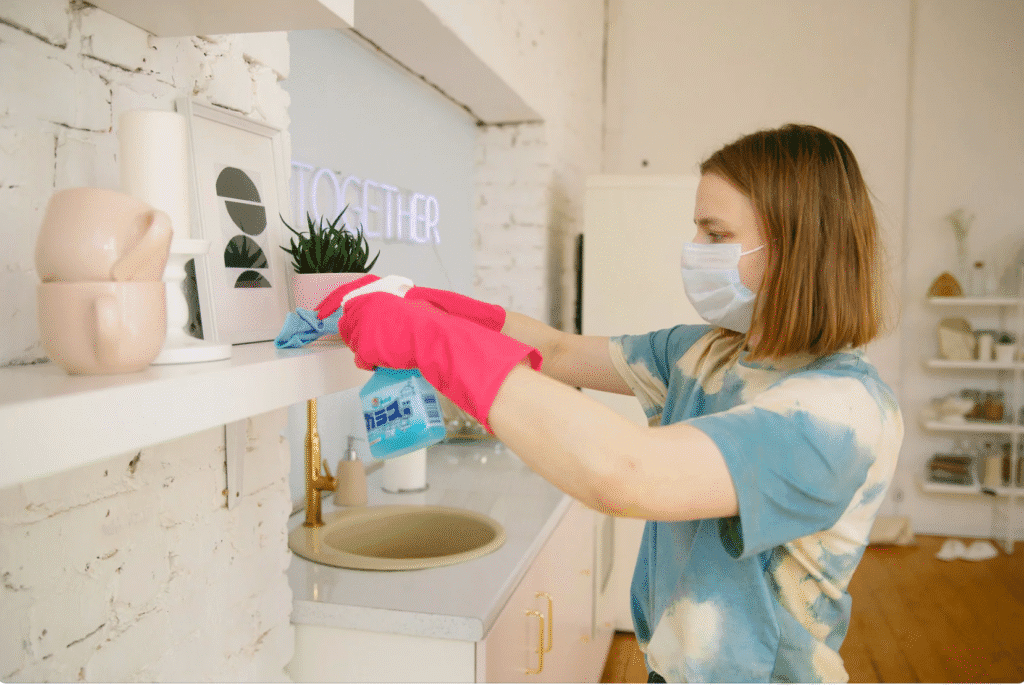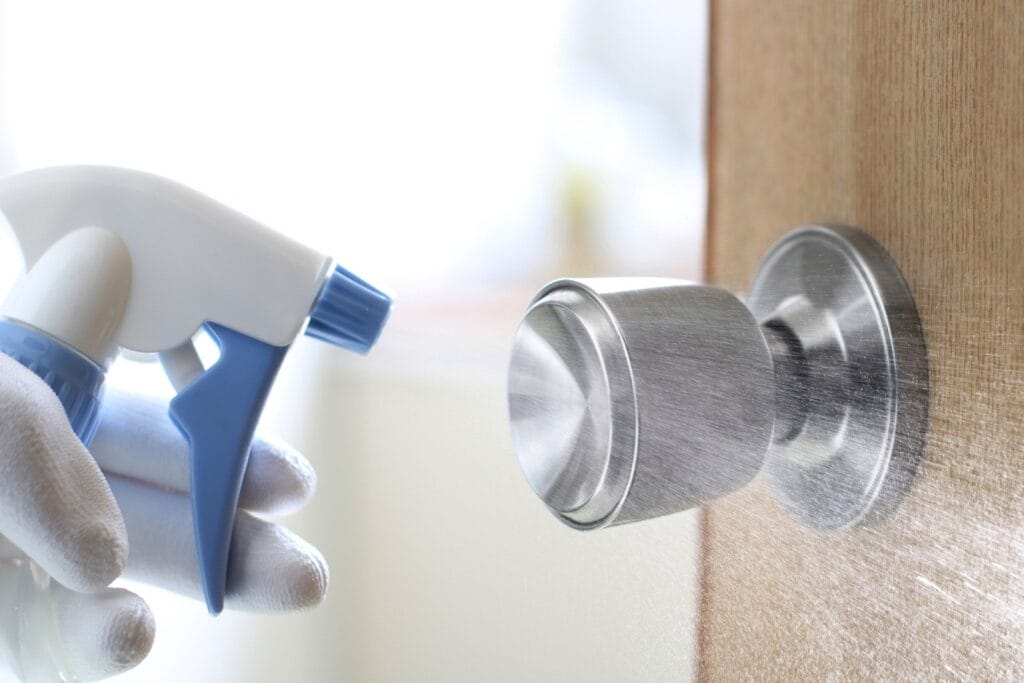COVID-19 changed the way businesses run. As more people are affected, businesses and organizations are moving in haste to protect their employees and reduce the risk of office contamination.
To ensure that your workplace is free from contamination, regular cleaning and disinfection is a must. Cleaning, sterilization, and disinfection are vital in keeping the virus at bay.
Difference between Cleaning, Sterilization, and Disinfection
Cleaning, sterilization, and disinfection provide protection from microorganisms that contaminate a surface, both infectious and non-infectious.
Cleaning is the removal of dirt from surfaces using water and a soluble cleaning material like detergent. It physically removes microorganisms from the surface without killing it. It could only lower the number of microorganisms on the surface to reduce the risk of infection.
Disinfection, on the other hand, is a process that eliminates MOST microorganisms using specific chemicals that target pathogens. Because of their nature, these chemicals are abrasive. They may cause damage to the surface they are used on.
Sterilization is a process that destroys all microorganisms present on a surface. It is usually done for medical purposes to prevent the transmission of pathogens.
If you want to guarantee the safety of your employees, opting for regular disinfection and sterilization of your office space is ideal. Nevertheless, there is a margin of error to both sterilization and disinfection. Below are the factors that may affect the efficacy of disinfection and sterilization:
- Thoroughness of the cleaning done before the disinfection/sterilization
- Amount of organic and inorganic substance present
- Type and level of microbial contamination
- Concentration and exposure to the active chemical ingredient
- Temperature and acidity of the process
What is Touchpoint Cleaning and Disinfection?
Touchpoint cleaning is a cleaning process that focuses on locations that are frequently touched throughout the day. The more an object is touched, the more germs and bacteria are likely to be present.
Light switches, doorknobs, phones, tablets, keyboards, vending machines, and elevator buttons are some of the commonly touched areas. These areas are common places for bacteria, germs, and viruses to collect and spread from person to person. Regular disinfection helps eliminate and reduce the spread of illness to anyone in your workplace or school.
Surfaces should be cleaned first before thorough disinfection is done. EPA registered, low-hazard chemicals are used to disinfect the areas to ensure that no damage will be done.
Electrostatic spraying may also be used to disinfect your facility. With this, electrical charges will enable the disinfecting agent to reach difficult areas such as nooks and crannies. This will ensure a more thorough disinfection to keep your employees and their families safe against cough, flu, and cold symptoms.
What Are Effective Touchpoint Cleaning Tips?
Identification
The first step in addressing a problem is identification. This statement rings true for touchpoint cleaning. Before anything else, you need to identify the high-contact surfaces throughout your facility. These are the areas that experience high volumes of foot traffic.
Two areas that are of concern are the employee desks and break rooms. Experiments have shown that break rooms are breeding grounds of infectious germs and bacteria. As such, your janitorial service should pay more attention to these spaces in order to curb the spread of diseases.
Improved Disinfection
After identifying the high-contact areas, the next step is addressing the frequency of cleaning and disinfection. Every office operation requires a different degree of cleaning. Likewise, the different rooms in your workspace also warrant varied levels of sanitation.
However, the general rule of thumb: the amount of times an object is used should at least be equal to the frequency by which it is cleaned.
For facilities with continuous foot traffic, assigning a porter to these areas would be effective in reducing the presence of surface pathogens. Make sure that your porters are trained to tackle the sanitation of shared spaces. Otherwise, providing your employees with cleaning tools is a more cost-effective way to encourage hygienic touchpoint practices in the office.
Reviewing Your Guidelines
Having touchpoint cleaning regulations is a great way to ensure the safety of your employees. However, your duty doesn’t end with imposing these guidelines. You need to be sure that the rules that you developed are working well for the operations and workers that you have.
Talk to your employees. Create a space of discussion surrounding the new touchpoint cleaning guidelines and ask for their input. Their opinions are important because they spend the most time in the area you are trying to maintain. Listen to what they have to say and adjust accordingly. At the end of the day, there is always room for improvement.
As long as COVID19 is around, taking precautionary measures such as cleaning and disinfecting is important. As a business or organization, you are responsible for maintaining a clean and safe work environment. You should provide assurance to your clients and employees that you are able to protect their health and wellbeing.
Train your employees about the importance of regular scheduled cleaning. Take note and focus on high trafficked areas. And if necessary, get on board with cleaning service providers.

